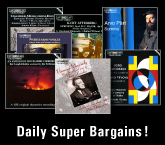The tradition of composing music for piano four hands originated in the cozy salons of the Austro-German upper class. These were intimate gatherings where Franz Schubert (1797-1828) poured his heart out through music among a select group of friends and acquaintances. These musical gatherings, known as ‘schubertiadi,’ were captured in various paintings and engravings, with Gustav Klimt paying tribute to them in his 1899 painting titled ‘Schubert at the Piano.’
Schubert's compositions in this chamber music style range from stylized dances to marches, drawing from both entertainment music, typical of home performances, and the lively atmosphere of salon gatherings, filled with energy and virtuosity. Many of these works were meant to be enjoyed in the moment with friends or kept as private experiments, much like secret dreams.
In June 1824, Schubert composed the Sonata in C Major for Piano Four Hands in Zseliezovce (now in Slovakia), during his stay with Prince Nicola II Esterházy, where he taught piano to the prince's daughters. This sonata, like many of Schubert’s works, was only published after his death, in 1837, by Anton Diabelli, who renamed it the “Grand Duo op. 140” due to its length and complexity. The sonata was dedicated to the celebrated pianist Clara Wieck, wife of Robert Schumann, who was a strong advocate for Schubert’s music.
In the “Grand Duo,” we can see elements that later influenced Schumann’s music: sudden shifts in key, recurring motifs, rhythmic patterns, and other characteristics typical of home entertainment music, but expanded on a grander scale. Despite the intended modesty of the Biedermeier period, the music brims with restless energy and, at times, percussive force, defying convention.
Lasting about 45 minutes, the Sonata D 812 was so dense that Schumann considered it a study for a symphony, hearing in it echoes of orchestral sounds and dynamics. Brahms even arranged it for orchestra in 1855.
Schubert’s aim with the “Grand Duo” was to push the expressive limits of the piano, following in Beethoven’s footsteps while exploring new harmonic paths. Inspired by Beethoven’s Ninth Symphony, Schubert sought to create large-scale works while preserving the essence of sonata form. The first movement adheres to formal structures but introduces a sense of uncertainty, deviating from traditional harmonic progressions.
The technique of sudden key changes, though common, takes on a disconcerting quality in Schubert’s hands, keeping the listener on edge. The second movement, an Andante in 3/8 time, combines elements of Haydn’s elegance with Schumann’s emotive phrasing, introducing harmonic clashes that heighten the expressive power of the music within a slow tempo—a space traditionally reserved for calm reflection.
The third part of the piece, known as the Scherzo and Trio, really focuses on sharp, punchy sounds and clashing notes—two main ideas that drive the conversation between the two sets of hands playing the piano. Then comes the lively finale, the Allegro, which dives deep into romantic feelings, drawing inspiration from a Hungarian dance loved by the Esterházy patrons. Here, you can sense a connection between Haydn, Liszt, and Dvořák—a connection marked by the intense energy of Gypsy culture, which influenced the Austro-Hungarian Empire throughout the Romantic era, shaking up its traditions.
Schubert stuck to his guns in his pursuit of a fresh style while sticking to traditional structures until the very end. He wrote the Allegro in A minor for Piano Four Hands, D 947, in May 1828, just six months before he passed away. It was published after his death as Op. 144 by Diabelli, titled "Lebensstürme" (Storms of Life), hinting at the struggles Schubert faced, including his battle with syphilis. In this piece, Schubert's skill in moving between vastly different musical moods is clear—a technique that influenced later composers like Schumann, Brahms, and even Richard Strauss. The Allegro D 947 looks both forward and backward in time. It reflects the boldness of Beethoven's recent works while also nodding to Bach, reviving a rich, textured style and skirting the fear of empty space in the music.
The two main themes in the piece, each with its own pair of melodies, establish a stark contrast between opposing elements. This contrast is heightened not only through the development of the first theme but also by the finale and its aftermath. This structure pays homage to Beethoven's idea of sonata form, though it's a bit fractured and disjointed—a mix of memories, pauses, confusion, and anxieties. This idea of time, so relatable to our own experience, is one of the most captivating aspects of Schubert's work—a young man, expressed through the intimate interplay of four hands, grappling with his own struggles and uncertainties.







